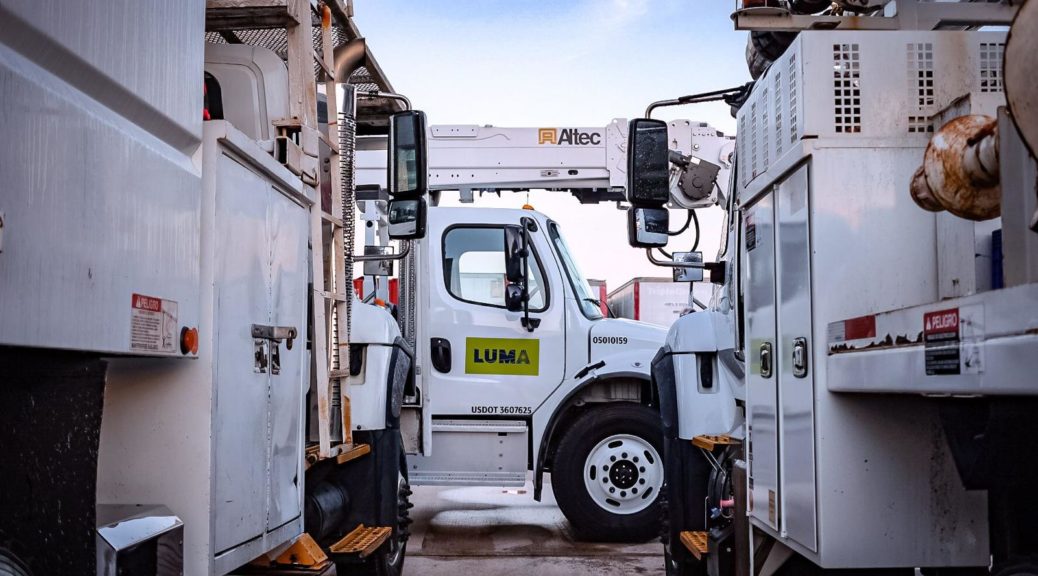In an annual Resource Adequacy Report submitted to the PREB, LUMA estimates 36 days (between July 2024 and June 2025) of outages caused by insufficient generation.
San Juan, Puerto Rico, October 31, 2024 – Today, LUMA filed its annual Resource Adequacy Report with the Puerto Rico Energy Bureau (PREB) highlighting the key challenges impacting the reliability of the Puerto Rico electric system due to lack of reliable generation. Even though LUMA does not control, own or manage any of Puerto Rico’s generation facilities, as the operator of the transmission and distribution system, LUMA’s energy experts conduct a yearly forward-looking evaluation of the stability, reliability and resiliency of the island’s generation capacity and ability to meet energy demand.
“Without reliable generation, there is no reliable energy in Puerto Rico. Much like the transmission and distribution system, the island’s generation assets have suffered from decades of neglect resulting in a significant lack of generation capacity that leads to frustrating outages for our customers. Our Resource Adequacy Report is a critical tool in helping analyze and evaluate the current state of the generation system, assessing the impact on reliability, and what actions must be taken to provide more reliable energy for Puerto Ricans every single day,” said Juan Saca, LUMA President and Chief Executive Officer.
Key Resource Adequacy Report Finding
As outlined in the 2024 Resource Adequacy Report, LUMA experts determined that customers may experience on average up to 154 hours of generation-related service interruptions, or load sheds, across an estimated 36 days between July 2024 and June 2025 due to insufficient generation supply. For comparison, between July 2023 and June 2024, customers experienced a total of 33 load shed events due to generation shortfalls, resulting in 78 hours of service interruptions.
Key Facts & Challenges
Puerto Rico’s generation facilities are operated by GeneraPR, Independent Power Producers (IPPs) and PREPA. While the IPP-run facilities have relatively high availability, the plants owned by PREPA — which make up 76.5% of the dependable capacity available from Puerto Rico’s thermal power plants — continue to suffer from a history of neglect that negatively impacts energy supply and system reliability. Among the key facts and ongoing challenges outlined in the report, include:
- Insufficient Generation Supply: On average, only 53% of the total generation supply is expected to be available because many power plants are out of service for a variety of factors, including scheduled maintenance outages and forced outages caused by failing or damaged equipment.
- Estimated Impact: The report estimates there will be approximately 36 days between July 2024 and June 2025 when daily electric service will be interrupted due to insufficient generation resources – 362 times higher than the utility planning standard of one day in 10 years.
- Lack of Maintenance: Most generation facilities in Puerto Rico are much more unreliable than power plants elsewhere in the world due to a legacy of a lack of proper maintenance, and thus are frequently unavailable to operate when peak electricity demand occurs.
- Aging Infrastructure: Some generation units are so physically degraded from age and underinvestment that they are only able to deliver a fraction of their available capacity.
How LUMA is Helping
While LUMA does not own or operate any generation facilities, and is not responsible for generation, LUMA is committed to doing everything it can to work with the island’s generators to address Puerto Rico’s generation capacity deficit. Among the positive steps LUMA is taking, which are outlined in the report, include:
- Empowering the Adoption of Renewable Energy: LUMA is connecting approximately 3,650 customers to rooftop solar per month, and to date has helped connect over 118,000 solar customers, adding more than 860 MW of renewable energy to the grid, and propelling Puerto Rico to rank 5th in solar adoption per capita among all U.S. states and territories.
- Advocating for Emergency Generation: Working with key stakeholders, LUMA advocated for the rapid deployment of emergency generation in the wake of Hurricane Fiona. In less than a year, this effort led to FEMA-funded generators deployed in Puerto Rico, adding 340 MW of generation capacity to the island’s grid.
- Advancing Large-Scale Renewable Projects: LUMA is working with renewable energy developers, investors and the Government of Puerto Rico to interconnect large-scale solar photovoltaic (PV) projects to add new capacity to the grid, increase renewable resources and help build a cleaner electric system that will reliably serve Puerto Rico for decades to come.
- Enabling Residential Battery Energy Storage as a Systems Resource: LUMA has been collaborating with stakeholders on the Customer Battery Energy Sharing (CBES) initiative, to increase the supply of energy available during peak demand periods by drawing from participating customers’ battery systems to improve day-to-day service reliability and minimize the impact of load shedding.
- Developing Industrial Battery Energy Storage: LUMA is working with existing IPPs across the island to add industrial-scale battery energy storage on-site as part of the Accelerated Storage Addition Program (ASAP). The first phase of this program is expected to significantly reduce load sheds and save customers approximately $100 million in fuel costs annually through the addition of 180 MW of industrial battery storage.
Attached is a fact sheet with key information from the Resource Adequacy Report.
About LUMA
LUMA is a Puerto Rican company that, since June 1, 2021, operates and manages the electric power transmission and distribution system in Puerto Rico. LUMA is a company driven by a mission to transform the electrical transmission and distribution system to provide all Puerto Ricans with the reliable, resilient, clean, and affordable electrical service they deserve. As a customer-centric company, LUMA’s entire workforce is focused on safely delivering an exceptional customer service experience to its 1.5 million customers.





